#eleonor of castile
Text
Petites Histoires du Monde
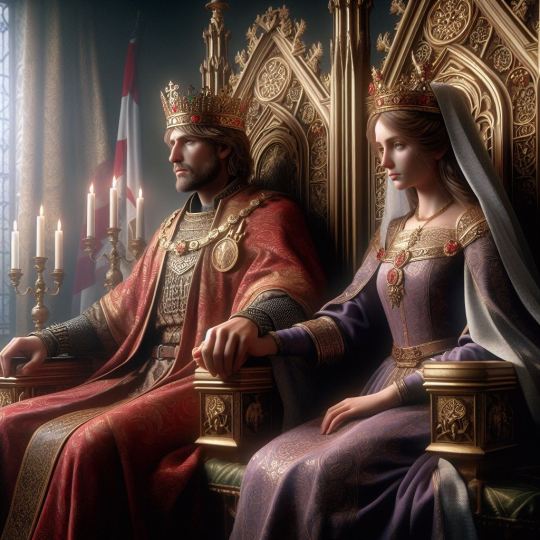
Listes des personnes et des OC pour l'instant :
- Baudouin IV de Jérusalem (5 histoires). (Plus à venir. )
Il est souvent associé à Alix de Tripoli, personnage fictif qui est la fille unique de Raymond III de Tripoli et qui a grandi à Jérusalem. Alix est douce, gentille, mais aussi intrépide et courageuse. Baudouin et Alix s'aiment infiniment, mais ils savent tous les deux que leur amour est impossible.
Mini-série : Guérison. Baudouin est guéri de la lèpre et décide quoi faire de sa vie. (À venir)
- Édouard Ier d'Angleterre (3 histoires) (Plus à venir. )
Il est souvent associé à sa femme Éléonore de Castille. Leur amour est inspirant et unique. Un OC peut apparaître également sous la forme d'Aliénor de Mercoeur, qui est la dame de compagnie et meilleure amie de la reine d'Angleterre.
Mini-série : Seconde Guerre des Barons avec le point de vue d'Henry III, Éléonore de Provence, Éléonore de Castille, Richard de Cornouailles et lord Édouard sur la bataille de Lewes de 1264. (Publié)
- Bohémond de Tarente (3 histoires) (Plus à venir. )
Bohémond est souvent associé à Alix de Sicile, une OC fictive qui est son épouse. Ils mettent du temps à se cerner l'un l'autre, mais après avoir découvert que sa femme n'est pas qu'une jolie chose à son bras, il est son plus fervent admirateur.
Mini-série : Chefs de la première croisade avec Godefroy de Bouillon, Baudouin de Boulogne, Hugues de Vermandois, Raymond de Saint-Gilles, Etienne de Blois, Robert de Flandres, Robert de Normandie, Adhémar de Monteil, Tancrède de Hauteville et bien sûr Bohémond. (En cours)
Personnages sans lien avec Bohémond de Tarente, Édouard Ier et Baudouin IV ou une mini-série.
- Louis IX de France, Saint-Louis (1 histoire)
- Édouard II d'Angleterre (À venir)
- Alphonse de Poitiers et sa femme Jeanne de Toulouse (À venir)
- Sybille de Jerusalem et Guy de Lusignan (À venir)
- Agnès de Courtenay (À venir)
- Amaury II de Jérusalem ( À venir)
- Aliénor d'Aquitaine ( À venir)
- Henry II d'Angleterre ( À venir)
- Richard cœur de Lion (À venir)
- Jean Sans Terre ( À venir)
Et bien d'autres....
Si vous voulez en voir plus n'hésitez pas à proposer des personnes ou des événements.
#fanfic#history medieval#medieval history#bohemond i of antioch#king baldwin#baldwin iv#edward ii#Edward I#booklr#france#england#eleonor of castile#eleanor of aquitaine#plantagenet#plantagenets
7 notes
·
View notes
Text
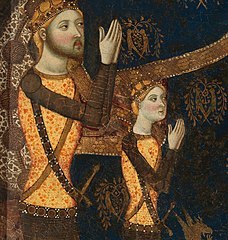

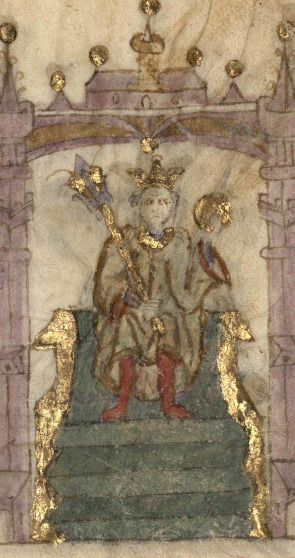
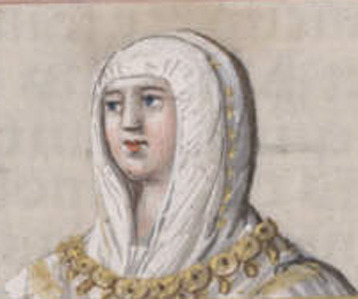
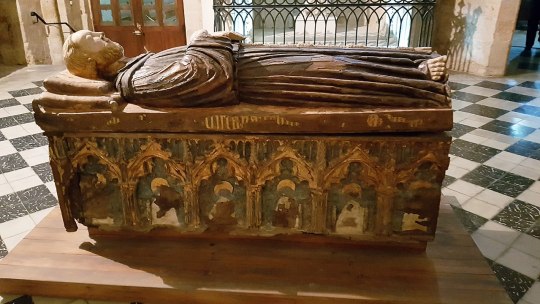
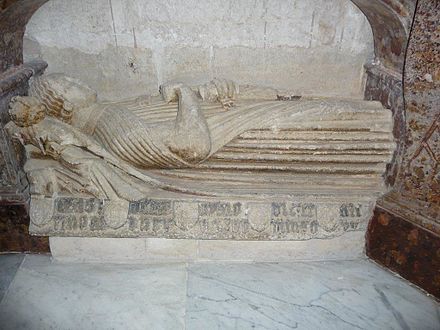

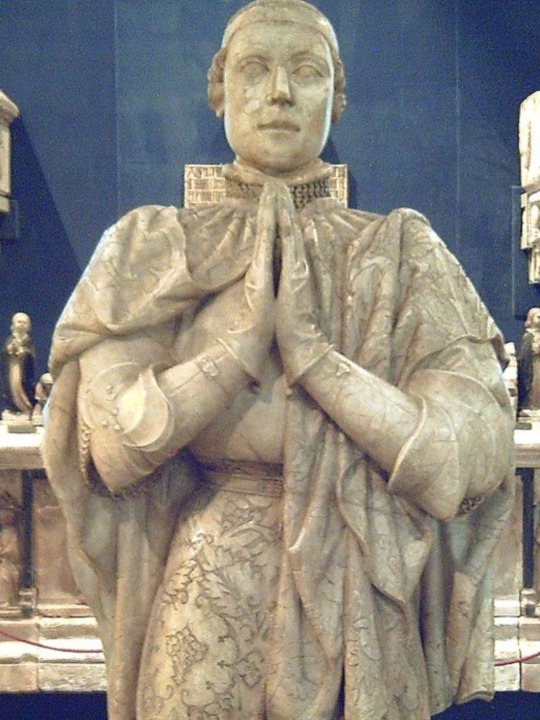
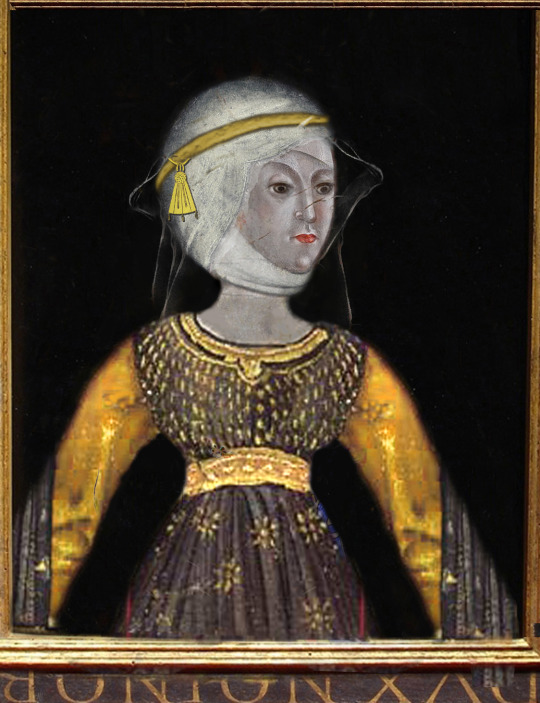

The Bastard Kings and their families
This is series of posts are complementary to this historical parallels post from the JON SNOW FORTNIGHT EVENT, and it's purpouse to discover the lives of medieval bastard kings, and the following posts are meant to collect portraits of those kings and their close relatives.
In many cases it's difficult to find contemporary art of their period, so some of the portrayals are subsequent.
1) Henry II of Castile ( 1334 – 1379), son of Alfonso XI of Castile and Leonor de Guzmán; and his son with Juana Manuel de Villena, John I of Castile (1358 – 1390)
2) His wife, Juana Manuel de Villena (1339 – 1381), daughter of Juan Manuel de Villena and his wife Blanca de la Cerda y Lara; with their daughter, Eleanor of Castile (1363 – 1415/1416)
3) His father, Alfonso XI of Castile (1311 – 1350), son of Ferdinand IV of Castile and his wife Constance of Portugal
4) His mother, Leonor de Guzmán y Ponce de León (1310–1351), daughter of Pedro Núñez de Guzmán and his wife Beatriz Ponce de León
5) His brother, Tello Alfonso of Castile (1337–1370), son of Alfonso XI of Castile and Leonor de Guzmán
6) His brother, Sancho Alfonso of Castile (1343–1375), son of Alfonso XI of Castile and Leonor de Guzmán
7) Daughters in law:
I. Eleonor of Aragon (20 February 1358 – 13 August 1382), daughter of Peter IV of Aragon and his wife Eleanor of Sicily; John I of Castile's first wife
II. Beatrice of Portugal (1373 – c. 1420) daughter of Ferdinand I of Portugal and his wife Leonor Teles de Meneses; John I of Castile's second wife
Son in law:
III. Charles III of Navarre (1361 –1425), son of Charles II of Navarre and Joan of Valois; Eleanor of Castile's huband
8) His brother, Peter I of Castile (1334 – 1369), son of Alfonso XI of Castile and Mary of Portugal
9) His niece, Isabella of Castile (1355 – 1392), daughter of Peter I of Castile and María de Padilla
10) His niece, Constance of Castile (1354 – 1394), daughter of Peter I of Castile and María de Padilla
#jonsnowfortnightevent2023#henry ii of castile#john i of castile#juana manuel de villena#eleanor of castile#alfonso xi of castile#leonor de guzmán#tello alfonso of castile#sancho alfonso of castile#peter i of castile#constance of castile#isabella of castile#asoiaf#a song of ice and fire#day 10#echoes of the past#historical parallels#medieval bastard kings#bastard kings and their families#eleanor of aragon#beatrice of portugal#charles iii of navarre#canonjonsnow
15 notes
·
View notes
Note
It is interesting to see people speculating on the number of children Barbarian King Eren and Empress Mikasa would have. Because yes, the story has breeding kink undertones from the fanfic point of view. And we did have real life cases of royal couples who had astonishing amounts of children. Reining Empress Maria Theresia of Austria had no less than sixteen children with her husband Franz I Stephen. King Edward I of England and Eleonor of Castile had at least fourteen. However, if you look at Roman Imperial family trees, you’ll find most of them didn’t even actually have biological offspring.
I never found a satisfactory explanation for this. We have full records of kings in Antiquity with many sons, and later Byzantine Emperors – who are, in fact, Roman Emperors two, but categorized differently – didn’t follow this childless pattern. This lack of biological progeny wasn’t actually a problem in the Roman world because, even though it was named Empire, they didn’t follow family and succession traditions like modern European countries. The system we think about, in which the eldest son of the king succeeds him and is in turn succeeded by his eldest son (or daughter, nowadays) originated from the Franks in the Early Middle Ages and was slowly adapted by Europe as a whole. Many countries never had such a succession system: Byzantium, China, Persia, the Caliphates, Japan, the Mongols, and so forth, never used it. Great Britain, use this system with a very particular way of counting children, remounting to the 18th Century succession dispute. Russia’s successor was chosen by the previous monarch, which led to innumerous coups and civil wars in the 17th and 18th Centuries until the Pauline Laws which established the Frankish system in 1797.
Ancient Rome slowly walked towards something akin to the Frankish succession as the Emperor accumulated more and more institutional power during the Dominate, which is exactly the period we are talking about. This coincided, funnily enough, with the decadence and dissolution of the Empire, even if the Frankish succession, however problematic in theory, proved to be the most stable model. Roman family structures involved both the biological family, the clan you belonged to, and the adoption of children. And adoption was usually what Emperors did when they wanted a worthy successor, even if they had biological children of their own. So you’d have a 50 something Emperor adopting a 40 something general or politician. In sum, family composition and succession laws worked very differently in the Roman world. What we call the imperial dynasties are usually connected by blood but not necessarily emperor to emperor, but normally through the marriage of sons and daughters from one another, even if they didn’t ascend the throne, their sons could. The very same Theodosian Dynasty ruling in the East and West at this time in History, although much more similar to the succession laws we know today, actually co-reigned with the Valentinian Dynasty in the West. Both families kept the throne between themselves through many marriages. It is not something we, used to European succession traditions, would be very familiar with.
So how many children would Empress Mikasa and Barbarian Eren have? No idea. Historically, very, very few, if any at all hahaha! Attila did have three sons that we know of, and probably had more unrecorded children, specially daughters. Is it possible to have them have 16 children? Yes, why not? Mikasa’s position as reigning Empress is entirely new as well, it could be the start of a new reality for the imperial family. Ancient Rome had many famous and influential woman, but only one ever came to directly rule the Empire as regent, Galla Placidia, mother of Honoria and Valentinian III. Later Byzantium would have influential consorts like Aelia Pulcheria and Theodora, but the Roman world would only know a reigning Empress in 797 with the usurper Irene of Athens. Later they would have legitimate Empresses, like Theodora I the Blessed and Theodora II Porphyrogenita, Eudokia Makrembolitissa and Zoe. Since Rome never had a proper reigning Empress, we could imagine how it would be like. If we go by later Byzantine tradition, however, Mikasa would be the key to legitimacy to become Emperor, and whoever she married would be automatically Emperor – but she, herself, wouldn’t have a claim to rule on her own, and most likely would only act as a regent while she’s not married. Here, however, I think it is safe to say Eren and Mikasa co-rule. But for her time, Mikasa’s (and Eren’s) position is something unheard of in the History!
my beautiful history anon came backkk😭😭😭
honestly i think the romans with the adoption and selection had it best, if them in their own position of power was good and acclaimed it makes sense for them and the people around to choose and the adopt or have them marry their daughters. to mold the next emperor that at least had the same values. when it’s about family to family it gets risky even more when it’s a birth right for the kid. i’d say they are not entirely sure they want their child but nonetheless teach them the ways of ruling and if he grows up to be a good one then no problem if not there’s the siblings or other people.
i think the fact the people wanted mikasa in this au to be the empress it’s the point of conversion. things are not the same anymore. i think we could say that’s where we deviate a bit. and thinks could change. how many kids? i don’t know honestly. we’ll see as we go, but i want miksa to tear herself open too many times. birth is dangerous and painful after all.
i love you tho history anon. your manuscripts of knowledge you send us are a breath of fresh air 😮💨
1 note
·
View note
Photo

A portrait print, in imitation of a chalk drawing, of Eleonor of Castile, Queen of Portugal and later Queen of France, copied from P.G. J. Niel's two-volume
#Eleonor of Castile#House Habsburg#Adolphe Pierre Riffaut#xix century#drawings#portrait#people#art#arte
0 notes
Photo




The family of Blanche of Castile
Blanche was born on March 4, 1188 in Palencia, Castile, an area that is now part of central and northern Spain. Her father was King Alfonso VIII of Castile. He is most remembered for his part in the Reconquista and the downfall of the Almohad Caliphate. Alfonso was the founder of the first Spanish university, a studium generale at Palencia, which, however, did not survive him. His court also served as an important instrument for Spanish cultural achievement. Troubadours and sages were regularly present in Alfonso VIII’s court due to the patronage of his wife.
Her mother was an illustrious princess, Eleanor of England, the daughter of King Henry II and Eleanor of Aquitaine. In her mother Blanche had an excellent example of a highly educated woman, able to wield the kind of control often denied to women at the time. The Queen had been gifted control of her dower, specific towns, ports and villages whose rents went towards the upkeep of her court. King Alfonso trusted his wife's judgement and named her in his will as Regent should his eventual heir, Prince Henry, be too young to rule in his own right. It was she who persuaded him to marry their daughter Berenguela to Alfonso IX of León. Queen Eleanor also supported several monastic houses in Castile and maintained a shrine to St Thomas Becket, providing Blanche with an example of the religious influence a Queen could wield. She also created and supported the Abbey of Santa María la Real at Las Huelgas, which served as a refuge and tomb for her family for generations, and its affiliated hospital. When Alfonso died, Eleanor was reportedly so devastated with grief that she was unable to preside over the burial. Eleanor then took sick and died only twenty-eight days after her husband.
Blanche was the sixth of eleven children. Her sister Berenguela was Queen regnant of Castile and Queen consort of León; Urraca was Queen consort of Portugal; Eleanor was Queen consort of Aragon, and Constance was a nun at the Cistercian monastery of Santa María la Real. Her only surviving brother Henry, succeeded his father in 1214 aged ten under the regency firstly of his mother and later his oldest sister. He was killed when he was struck by a tile falling from a roof. (x)(x)
Gifs from documentary “Secrets d'Histoire - Blanche de Castille : la reine mère a du caractère”
99 notes
·
View notes
Text
Master Post - Members who married into a royal or noble house
Disclaimer: If a person married someone from the same house as they were born into, I have not listed them in this list. Please look at the list sorted by birth for them. Houses that rule(d)/reside(d) in other countries but originally came from German and/or Austrian territories and/or are generally regarded as belonging to this cultural room are listed among the German & Austrian Houses.
German & Austrian Houses
House of Babenberg
Princess Eudokia Laskarina of Nicaea, The Hereditary Duchess of Austria
Princess Theodora Angelina of Byzantium, The Duchess of Austria & Styria
Princess Theodora Komnene of Byzantium, The Duchess of Bavaria & Austria
House of Castell
Baroness Ottilie of Faber, Countess of Faber-Castell
House of Coburg (Cadet branch of the House of Wettin)
Princess Louise of Saxe-Gotha-Altenburg, The Duchess of Saxe-Coburg-Saalfeld (1st marriage)
Princess Mary of Teck, The Queen of the United Kingdom & British Dominions, The Empress of India
Queen Victoria of the United Kingdom (wife of Prince Albert of Saxe-Coburg and Gotha)
House of Faber
Ottilie Richter, Baroness of Faber
House of Habsburg (incl. Habsburg-Lorraine)
Anna Plochl, Countess of Meran
Princess Charlotte of Belgium, The Empress of Mexico, Archduchess of Austria
Infanta Eleanor of Portugal, Holy Roman Empress, The Archduchess of Austria
Eleonore Magdalene of Neuburg, Holy Roman Empress
Elisabeth in Bavaria, The Empress of Austria
Princess Elisabeth Christine of Brunswick-Wolfenbüttel, Holy Roman Empress
Queen Joanna of Castile, León and Aragon (Consort of Philip the Handsome, Archduke of Austria and The Duke of Burgundy)
Princess Maria Anna of Bavaria, The Archduchess of Inner Austria-Styria
Maria Beatrice d’Este, The Duchess of Massa & Carrara, Archduchess of Austria
Mary, The Duchess of Burgundy
Princess Sophie of Bavaria, Archduchess of Austria
Countess Sophie Chotek of Chotkowa and Wognin, The Duchess of Hohenberg
Princess Stéphanie of Belgium, The Crown Princess of Austria, Hungary and Bohemia
House of Hanover (Cadet branch of the House of Welf)
Princess Adelaide (Adelheid) of Saxe-Meiningen, The Queen of the United Kingdom and Hanover
Princess Caroline of Ansbach, The Queen of Great Britain
Princess Caroline of Brunswick-Wolfenbüttel, The Queen of the United Kingdom and Hanover
Princess Charlotte of Mecklenburg-Strelitz, The Queen of Great Britain, Ireland and Hanover
Frederica (Friederike) of Mecklenburg-Strelitz, The Queen of Hanover, The Duchess of Cumberland and Teviotdale (3rd marriage)
Princess Victoria of Saxe-Coburg-Saalfeld, The Duchess of Kent (2nd marriage)
House of Hesse
Princess Alice of Great Britain and Ireland, The Grand Duchess of Hesse and by Rhine
Princess Cecilie of Greece and Denmark, The Hereditary Grand Duchess of Hesse and by Rhine
Princess Christina of Saxony, The Landgravine of Hesse
House of Hohenlohe-Langenburg
Princess Feodora of Leininigen, The Princess of Hohenlohe-Langenburg
House of Hohenstaufen
Irene of Byzantium, The Queen of the Germans, The Duchess of Swabia
House of Hohenzollern
Princess Augusta of Saxe-Weimar-Eisenach, The German Empress
Princess Augusta Victoria (Auguste Viktoria) of Schleswig-Holstein, The German Empress
Elisabeth Christine of Brunswick-Wolfenbüttel-Bevern, The Queen of Prussia
Princess Elisabeth of Wied, The Queen & Princess of Romania
Princess Elisabeth Ludovika of Bavaria, The Queen of Prussia
Frederica (Friederike) of Mecklenburg-Strelitz, Princess Louis Charles of Prussia (1st marriage)
Princess Hermine Reuß, “German Empress”
Jadwiga Jagiellon, Electress of Brandenburg
Louise of Mecklenburg-Strelitz, The Queen of Prussia
Princess Sophia Dorothea of Hanover, The Queen in Prussia
Princess Victoria of Great Britain and Ireland, Princess Royal, The German Empress
House of La Marck
Jeanne d’Albret, The Duchess of Jülich-Cleves-Berg
House of Limburg-Luxemburg
Elizabeth of Pomerania, Holy Roman Empress
House of Nassau
Princess Sophie of Württemberg, The Queen of the Netherlands
House of Oldenburg
Princess Adelheid of Hohenlohe-Langenburg, The Duchess of Schleswig-Holstein
Princess Juliane of Brunswick-Wolfenbüttel-Bevern, The Queen of Denmark and Norway
House of Supplinburg
Richenza of Northeim, Holy Roman Empress
House of Thurn and Taxis
Helene in Bavaria, The Hereditary Princess of Thurn and Taxis
House of Welf (without the British Hanover branch)
Princess Elisabeth of Brandenburg, The Duchess of Brunswick-Calenberg-Göttingen
Elisabeth of Mecklenburg-Schwerin, Princess of Brunswick-Lüneburg aka Grand Duchess Anna Leopoldovna of Russia
House of Wettin (without the Coburg branch)
Princess Amalie Auguste of Bavaria, The Queen of Saxony
Princess Feodora of Hohenlohe-Langenburg, The Duchess of Saxe-Meiningen
Princess Maria Anna of Bavaria, The Queen of Saxony
Sibylle of Cleves, The Electress of Saxony
House of Wittelsbach
Elizabeth Stuart, The Queen of Bohemia & Electress Palatine
Kunigunde of Austria, The Duchess of Bavaria-Munich
Princess Louise d’Orléans, Princess of Bavaria
Archduchess Maria Antonia of Austria, The Electress of Bavaria
Princess Marie of Prussia, The Queen of Bavaria
The House of Württemberg
Princess Antoinette of Saxe-Coburg-Saalfeld, Duchess of Württemberg
Princess Marie Auguste of Thurn and Taxis, The Duchess of Württemberg
The Ottonians
Adelaide of Burgundy, Holy Roman Empress, Queen of Italy
Theophanu, Holy Roman Empress
Foreign Houses
House of Bourbon
Jeanne d’Albret, The Queen of Navarre and The Duchess of Vendôme
Archduchess Maria Antonia “Marie Antoinette” of Austria, The Queen of France
House of Braganza
Archduchess Maria Leopoldina, The Empress of Brazil, The Queen of Portugal and the Algarves
Byzantine Imperial Family
Konstanze “Anna” of Hohenstaufen, The Empress of Nicaea
House of Ivrea
Elisabeth “Beatrix” of Swabia, The Queen of Castile, León & Galicia
House of Lorraine
Archduchess Maria Anna of Austria, Princess of Lorraine and Bar
The Archduchess Maria Theresa (Maria Theresia) of Austria, Holy Roman Empress (marriage formed new House of Habsburg-Lorraine)
House of Medici
Archduchess Johanna of Austria, The Grand Duchess of Tuscany
House of Radziwiłł
Princess Luise of Prussia, Princess Radziwiłł
House of Romanov (incl. Romanov-Holstein-Gottrop)
Princess Alix of Hesse and by Rhine aka Empress Alexandra Feodorovna of Russia
Princess Elisabeth of Hesse and by Rhine, Grand Duchess Elizabeth Feodorovna of Russia
Princess Sophie of Anhalt-Zerbst, The Empress Regnant of Russia aka Catherine the Great
House of Tudor
Anne of Cleves, The Queen of England
House of Valois
Elisabeth (Isabeau) of Bavaria, The Queen of France
House of Vasa
Princess Maria Eleonora of Brandenburg, The Queen of Sweden
Minor Nobles
Anna Constantia of Brockdorff, The Imperial Countess of Cosel
Helene Baltazzi, The Baroness of Vetsera
Maria Anna Mozart, The Imperial Countess Berchthold
Marie Karoline of Mollard, The Imperial Countess of Fuchs to Bimbach
Sophia Botta, The Dark Countess of Hildburghausen
Sophie of Pannwitz, Countess of Voß
58 notes
·
View notes
Note
An Eleonor of Castile type character in WOT5K? Grrm said he did Cateyln after her but I saw a historial parallel and it didn’t add up. I wonder if you could do or briefly create a Eleonor of Castile type figure for agot or ACOK because I love her :)) she’s so interesting x
I don’t think GRRM does exact character parallels in that way, I think he tends to mix and match traits and famous (or infamous) moments from historical figures. Granted some of the historical sources he might draw from are probably... questionable, there’s a lot of debate as to what extent The Accursed Kings influenced his writing, especially Fire and Blood. Honestly I think ASOIAF would be a lot less interesting if every major character had a clear-cut historical parallel.
I also don’t think I am well-versed enough on Eleanor of Castile to create a convincing parallel to her in the context of an ASOIAF fic, but since a lot of ASOIAF fic writers tend to be huge history buffs who make me look totally clueless in comparison haha, I’m sure someone out there has written something along those lines.
4 notes
·
View notes
Text
Date: 02/23/2021
Time: 11:17AM
Location: Dr. Castellana’s office, Lethe Hospital
@eleonor-castellana
“Buenos días querida señora! I remembered to bring the book you were looking for, which is handy given you’ve scheduled me for today.” Alistair knew by now how the manners of the world had changed since he was first taught how to behave, but Eleonor seemed to enjoy his old fashioned manners. They hadn’t made much headway with his injury in the few months that he had been seeing her, but little matter. He liked the learned doctor and she had seemed a tad down lately. Pensive. So he had dug up a tome about the Spain of her youth to go with another that she had requested from the shop, wrapped them up carefully in butcher paper, and now sat them on her desk. It was easier to walk these days, some of her treatments had eased the pain, but he still leaned on his cane a tad as he walked forward. Thankfully the chair in front of her desk was a comfortable leather affair and he sank into it gladly after a quick handshake. This meeting, like the meetings he had with Mira Lowell, were intended to probe at how he was doing. Coping, really. Which wasn’t anywhere near as interesting as getting to know the women themselves. After what he had been through, he felt well enough in spite of the nagging fear that one day Morrigan might find her way here. Find her way to his family, which he had so recently won back. “The top is a little something extra. Castile before the Reconquista. I don’t not pretend to know your affairs, my dear Eleonor, but you seemed in need of a boost last I saw you. The tests you ran are of course the real reason that I am here, but ah! I thought I might as well.”

2 notes
·
View notes
Text
Peñafiel Castle is a medieval fortress located on a rocky spur dominating the municipality of Peñafiel, in the Spanish province of Valladolid. Identified from the Xe century, the fort has undergone various phases of evolution, until it acquired its current look in the 15th century. Today restored, it is considered one of the most beautiful examples of castile architecture in Castile; its silhouette, dimensions and place in the history of the Castilian Kingdom have earned it some fame.
-- History --
The first known reference to a fortress at Peñafiel dates back to 943, during the reign of Ramire II, king of León. It is then mentioned as one of the possessions of Ansur Fernández, Count of Monzón, then Count of Castile from 944 to 945.
In 983, the castle is taken away by Almanzor, hadjib of Cordouan caliph Hisham II. It was recaptured in 1008 by Sanche García, who had the Muslim fortress demolished, to build a new, fortified ensemble in a better and secure place, at the location of the current castle. It was probably the monarch who gave the name of the fortress Peña Falcón until then, saying a famous phrase: "desde hoy en adelante ésta será la peña más fiel de Castilla."
Around 1110, the square is headed by the governor (mayor) )lvar Fáñez, lieutenant of Rodrigo Díaz de Vivar. He repels a Muslim attack, then takes part in the two seats led against the fortress occupied by Alphonse I of Aragon, the Battalor, husband of Urraca of Castile, to whom he is opposed by differences.
In the 13th century, Ferdinand III, King of Castile and León, installed the señorío de Peñafiel to bequeath it to his son, Alphonse X. The latter passes it on to his brother, the child Manuel, who in turn, in fact, inherits his son, don Juan Manuel, unmissable writer of medieval Castilian literature, and the most powerful noble in the kingdom. Reprimanded by Sanche IV in 1294 for the poor condition of the fortress, he had it rebuilt in the early fourteenth century.
Under the reign of Peter I the Cruel, the lordship is abolished and his assets are incorporated into the crown's heritage. One of his successors, John I, bequeaths the fortress to Fernando de Antequera, his filthy son, future King of Aragon. This one, married to Eleonore Urraca of Castile, passes the castle to his second son, the future John II of Aragon, who holds the title of Duke of Peñafiel. As a child, he leads from Peñafiel a revolt against his cousin, John II of Castile, who regained the fortress in 1451 and ordered its destruction.
In 1456, Henri IV of Castile conceded the rights of the destroyed fortress to Pedro Tellez Girón, master of the Order of Calatrava, who then had the fortress built that we can see today. The Girón family will remain owners of the castle until the nineteenth century, and will boast of the title of Marquis de Peñafiel (the Marquisate was created by Philippe II in the 16th century) and Dukes of Osuna. The castle would later serve as a palace, then a prison, before being declared a national monument in 1917. Today property of the town hall of Peñafiel, it is open to visit and houses a wine museum.
-- Description --
- Situation.
The castle of Peñafiel stands on a long, narrow rocky hill whose shapes it marries. This particularity gives it such a distinctive silhouette, similar to that of a boat: it is therefore often referred to as el barco de Castile. His location not only determined his appearance, but also his military functions. Sitting above the city it protects, the fortress was reputed to be impregnable. Its position, about sixty kilometers from Valladolid, made it a strategic stronghold in the Middle Ages for border control, especially in the 9th and Xe centuries, when the line of demarcation between Christian kingdoms and Dom Muslim caves were partially established along the Duero. The fortress indeed dominates the valleys of Duratón, Botijas and Duero, and allowed roads to be controlled.
- Architecture.
The castle is built in limestone from Campaspero, city in the present province of Valladolid, bordering Segovia, where a long exploited quarry is located, and is still in service to this day. Despite some deterioration due to time, the building has arrived to us in an excellent condition of preservation and is among the best preserved fortresses in the country.
The dimensions of this are quite large. The defensive set is indeed about 210 meters long, and a maximum width of 35 meters. According to the configuration of the hill on which it rests, the castle does not adopt a square plan, but more or less the one of a brass, whose ends are sharp.
The fortress consists of two enclosures:
A sturdy and smooth outer enclosure, which is pierced only by a door defended by two towers, the only ones of which are inherited by the outer wall.
A second, indoor enclosure, is scanned by thirty engaged round towers, spaced from 10 to 15 meters each, and joined together by crimped curtains on the traditional round path.
The castle is dominated by the imposing mass of the dungeon (torre del homenaje), a rectangle of 14.5 meters by 20, rising 34 meters in height. Located in the center of the construction, it has at its top eight cylindrical towers in encircling, jaw-dropping and slots. The entrance was probably made by a levis bridge, which is missing today. The interior is organized in two floors vaulted as a cradle, connected to each other by a spiral staircase. This staircase reveals a roof terrace that gives a view of the area's wineries.
Two courts go around the tower: the north courtyard housed the tanks and shops, and the south courtyard housed the stables and garnishes. The provincial wine museum is located in the latter. The tank as well as some underground pieces (including a gallery system leading to an external outlet) remain near the tower.
Ogival German style, the fortress joins the circle of the so-called Valladolid School, whose model dates back to the middle of the 15th century with the new royal buildings in Segovia, Medina del Campo and Portillo. Adopted by many large families of Castilian nobility, but above all by small lords, the model spreads throughout the kingdom with a certain vitality. The characteristics of these fortresses reside essentially in the plan (square), the proportions, and the importance of the dungeon. In Peñafiel, the plan and proportions are distorted by the nature of the site. Nevertheless, the time of construction, the general aesthetic of the fort square, as well as the dimensions of the dungeon allow to establish the link between the site and the Valladolid school.

1 note
·
View note
Photo

#OnThisDay 1st 📸 - Year 1397, Birth of Isabella of Portugal, was Duchess of Burgundy as the third wife of Duke Philip the Good. Born a Portuguese infanta of the House of Aviz, Isabella was the only surviving daughter of King John I of Portugal and his wife Philippa of Lancaster. 2nd 📸 - Year 1462, Birth of Joanne la Beltraneja, was a claimant to the throne of Castile, and Queen of Portugal as the wife of King Afonso V, her uncle. 3rd 📸 - Year 1498, Coat of arms of Ralph Neville, 4th Earl of Westmorland. Birth of Ralph Neville, was an English peer and soldier. He was the grandson of Ralph Neville, 3rd Earl of Westmorland, and the father of Henry Neville, 5th Earl of Westmorland. 4th 📸 - Year 1541, Birth of Philipp V, was Count of Hanau-Lichtenberg from 1590 until his death. Philipp V was the eldest son, heir and successor of Count Philipp IV of Hanau-Lichtenberg (1514–1590) and the Countess Eleonore of Fürstenberg (1523–1544). #RoyalBirth #RoyalHistory #HistoryofRoyals #IsabellaofPortugal #DuchessofBurgundy #JoannelaBeltraneja #RalphNeville #4thEarl #PhilippV #CountofHanauLichtenberg #monarchy #EuropeanRoyalties https://www.instagram.com/p/CLjF4-PlD6G/?igshid=k7e8tmnot4as
#onthisday#royalbirth#royalhistory#historyofroyals#isabellaofportugal#duchessofburgundy#joannelabeltraneja#ralphneville#4thearl#philippv#countofhanaulichtenberg#monarchy#europeanroyalties
0 notes
Photo

A portrait print, in imitation of a chalk drawing, of Eleonor of Castile, Queen of Portugal and later Queen of France. Bust length with hood, jewelled earrings, and gown. With French inscription.
#eleanor of austria#house of habsburg#habsburg#the royal collection#Eleanor of Castile#long live the queue
14 notes
·
View notes
Text
Éléonore de Castille, (1241-1290), reine d'Angleterre. (1272-1290)


Les images ont été générées par IA.
0 notes
Text
Éléonore de Castille



Éléonore de Castille. (1241-1290) , reine bien-aimée d'Édouard Ier d'Angleterre.

Éléonore décéde le 28 novembre 1290 à Harby près de Lincoln.
Dans son chagrin, Édouard Ier exigea 21 jours de deuil et fit construire de 1291 à 1294, douze croix, symbolisant les 12 jours de voyage, qu'il fallut pour atteindre l'abbaye de Westminster.
0 notes
Text
Master Post - Members by birth
Disclaimer: Houses that rule(d)/reside(d) in other countries but originally came from German and/or Austrian territories and/or are generally regarded as belonging to this cultural room are listed among the German & Austrian Houses.
German & Austrian Houses
House of Ascania
Princess Sophie of Anhalt-Zerbst aka Catherine the Great
House of Coburg (Cadet branch of the House of Wettin)
Princess Alice of the United Kingdom, The Grand Duchess of Hesse and by Rhine
Princess Antoinette of Saxe-Coburg-Saalfeld, Duchess of Württemberg
Princess Charlotte of Belgium, The Empress of Mexico, Archduchess of Austria
Princess Stéphanie of Belgium, Crown Princess of Austria, Hungary & Bohemia
Princess Victoria of Great Britain and Ireland, Princess Royal, The German Empress
Victoria of Saxe-Coburg-Saalfeld, The Princess of Leiningen, The Duchess of Kent
House of Griffin
Elizabeth of Pomerania, Holy Roman Empress
House of Habsburg
Archduchess Johanna of Austria, The Grand Duchess of Tuscany
Archduchess Maria Amalia of Austria, Holy Roman Empress, The Electress of Bavaria
Archduchess Maria Anna of Austria, Princess of Lorraine and Bar
Archduchess Maria Antonia of Austria, The Electress of Bavaria
Archduchess Maria Antonia “Marie Antoinette” of Austria, The Queen of France and Navarre
Archduchess Maria Leopoldine of Austria, The Empress of Brazil, Queen of Portugal & the Algarves
Maria Theresia, The Archduchess of Austria, Holy Roman Empress
Archduchess Sophie of Austria
House of Hanover (Cadet branch of the House of Welf)
Princess Sophia Dorothea of Hanover, The Queen in Prussia
Queen Victoria of the United Kingdom, Empress of India
House of Hesse
Princess Alix of Hesse and by Rhine, Empress Alexandra Feodorovna of Russia
Princess Elisabeth of Hesse and by Rhine, Grand Duchess Elizabeth Feodorovna of Russia
House of Hohenlohe-Langenburg
Princess Adelheid of Hohenlohe-Langenburg, The Duchess of Schleswig-Holstein
Princess Feodora of Hohenlohe-Langenburg, The Duchess of Saxe-Meiningen
House of Hohenstaufen
Elisabeth “Beatrix” of Swabia, The Queen of Castile, León & Galicia
Konstanze “Anna” of Hohenstaufen, The Empress of Nicaea
House of Hohenzollern
Princess Anna Amalia of Prussia
Princess Caroline of Ansbach, The Queen of Great Britain & Ireland, The Electress of Hanover
Princess Elisabeth of Brandenburg, The Duchess of Brunswick-Calenberg-Göttingen
Princess Luise of Prussia, Princess Radziwiłł
Princess Maria Eleonora of Brandenburg, The Queen of Sweden
Princess Marie of Prussia, The Queen of Bavaria
Princess Wilhelmine of Prussia, The Margravine of Brandenburg-Bayreuth
House of La Marck
Amalia of Cleves
Anne of Cleves, The Queen of England
Sybille of Cleves, The Electress of Saxony
House of Leiningen
Princess Feodora of Leiningen, The Princess of Hohenlohe-Langenburg
House of Liechtenstein
Princess Sophie of Liechtenstein, Countess Esterházy de Galantha
House of Mecklenburg
Charlotte of Mecklenburg-Strelitz, The Queen of Great Britain, Ireland & Hanover
Elisabeth of Mecklenburg-Schwerin, Princess of Brunswick-Lüneburg aka Grand Duchess Anna Leopoldovna of Russia
Friederike (Federica) of Mecklenburg-Strelitz, The Queen of Hanover
Louise of Mecklenburg-Strelitz, The Queen of Prussia
Therese of Mecklenburg-Strelitz, The Princess of Thurn and Taxis
House of Northeim
Richenza of Northeim, Holy Roman Empress
House of Oldenburg
Augusta Victoria of Schleswig-Holstein, German Empress
Princess Cecilie of Greece & Denmark, The Hereditary Grand Duchess of Hesse and by Rhine
House of Reuß
Princess Hermine Reuß of Greiz, “German Empress”
House of Thurn and Taxis
Princes Marie Auguste of Thurn and Taxis, Duchess of Württemberg
House of Welf
Adelaide of Burgundy, Holy Roman Empress, Queen of Italy
Princess Caroline of Brunswick-Wolfenbüttel, The Queen of the United Kingdom & Hanover
Elisabeth Christine of Brunswick-Wolfenbüttel, Holy Roman Empress
Elisabeth Christine of Brunswick-Wolfenbüttel-Bevern, The Queen in & of Prussia
Princess Juliane of Brunswick-Wolfenbüttel-Bevern, The Queen of Denmark and Norway
House of Wettin
Adelheid (Adelaide) of Saxe-Meiningen, The Queen of the United Kingdom and Hanover
Princess Augusta of Saxe-Weimar-Eisenach, German Empress
Princess Christina of Saxony, The Landgravine of Hesse
Princess Luise (Louise) of Saxe-Gotha-Altenburg, The Duchess of Saxe-Coburg-Saalfeld, The Countess of Pölzig and Beiersdorf
House of Wied-Neuwied
Princess Elisabeth of Wied, The Queen & Princess of Romania
House of Wittelsbach
Princess Alexandra of Bavaria
Princess Amalie Auguste of Bavaria, The Queen of Saxony
Eleonore Magdalene of Neuburg, Holy Roman Empress
Elisabeth “Sisi” in Bavaria, The Empress of Austria
Elisabeth (Isabeau) of Bavaria, The Queen of France
Princess Elisabeth Ludovika of Bavaria, The Queen of Prussia
Helene “Néné” in Bavaria, The Hereditary Princess of Thurn and Taxis
Princess Ludovika of Bavaria, The Duchess in Bavaria
Princess Maria Anna of Bavaria, The Archduchess of Inner Austria-Styria
Princess Maria Anna of Bavaria, The Queen of Saxony
Marie in Bavaria, The Queen of Two Sicilies
Baroness Marie Louise of Wallersee, Countess of Larisch
Mathilde in Bavaria, The Countess of Trani
Sophie in Bavaria, The Duchess of Alençon
Princess Sophie of Bavaria, Archduchess of Austria
House of Württemberg
Mary of Teck, The Queen of the United Kingdom & British Dominions, Empress of India
Princess Sophie of Württemberg, The Queen of the Netherlands
Minor Nobles
Anna Constantia of Brockdorff, The Imperial Countess of Cosel
Katharina von Bora, Mrs Martin Luther
Baroness Louise Lehzen
Baroness Marie “Mary” of Vetsera
Sophie Botta, The Dark Countess of Hildburghausen
Sophie of Pannwitz, Countess of Voß
Foreign Houses
House of Albret
Jeanne d’Albret, The Queen of Navarre, 1. The Duchess of Jülich-Cleves-Berg and 2. The Duchess of Vendôme
House of Aviz
Infanta Eleonor of Portugal, Holy Roman Empress
House of Bourbon
Princess Louise d’Orléans, Princess Alfons of Bavaria
Byzantine Imperial Family
Princess Eudokia Laskarina of Nicaea, The Hereditary Duchess of Austria
Irene of Byzantium, The Queen of the Germans, The Duchess of Swabia
Princess Theodora Angelina, The Duchess of Austria & Styria
Princess Theodora Komnene of Byzantium, The Duchess of Bavaria & Austria
Theophanu, Holy Roman Empress
House of Chotek
Countess Sophie Chotek of Chotkowa and Wognin, The Duchess of Hohenberg
House of Este
Maria Beatrice d’Este, The Duchess of Massa & Carrara, Archduchess of Austria
House of Jagiellon
Jadwiga (Hedwig) Jagiellon, The Electress of Brandenburg
House of Stuart
Elizabeth Stuart, The Queen of Bohemia & Electress Palatine
House of Trastámara
Queen Joanna “The Mad” of Castile, Léon & Aragon, The Duchess of Burgundy, Archduchess of Austria
House of Valois
Mary, The Duchess of Burgundy, Archduchess of Austria
Commoners
Fatima Kariman aka Maria Aurora (von) Spiegel
Helene Baltazzi, The Baroness of Vetsera
Louise Rump, Mrs Ebert
Margot Großmann, Mrs Sauerbruch
Maria Anna Mozart, The Imperial Baroness Berchthold
Maria “Mizzi” Kaspar
Ottilie Richter, Baroness of Faber
Sophie Scholl
36 notes
·
View notes
Text
Master Post of German & Austrian Nobles and Royals
Royal and Noble Houses
House of Coburg (Cadet branch of the House of Wettin)
Princess Alice of Great Britain and Ireland, The Grand Duchess of Hesse and by Rhine
Princess Charlotte of Belgium, The Empress of Mexico
Princess Louise of Saxe-Gotha-Altenburg, The Duchess of Saxe-Coburg-Saalfeld, (1st marriage)
Princess Mary of Teck, The Queen of the United Kingdom & British Dominions, The Empress of India
Princess Stéphanie of Belgium, The Crown Princess of Austria, Hungary and Bohemia
Princess Victoria of Great Britain and Ireland, Princess Royal
Queen Victoria of the United Kingdom (wife of Prince Albert of Saxe-Coburg and Gotha)
Princess Victoria of Saxe-Coburg-Saalfeld, The Princess of Leiningen, The Duchess of Kent
House of Habsburg
Anna Plochl, Countess of Meran
Princess Charlotte of Belgium, The Empress of Mexico, Archduchess of Austria
Infanta Eleanor of Portugal, Holy Roman Empress, The Archduchess of Austria
Eleonore Magdalene of Neuburg, Holy Roman Empress
Elisabeth in Bavaria, The Empress of Austria
Princess Elisabeth Christine of Brunswick-Wolfenbüttel, Holy Roman Empress
Queen Joanna of Castile, León and Aragon (Consort of Philip the Handsome, Archduke of Austria and The Duke of Burgundy)
Archduchess Johanna of Austria, The Grand Duchess of Tuscany
Kunigunde of Austria, The Duchess of Bavaria-Munich
Archduchess Maria Amalia of Austria, Electress of Bavaria, Holy Roman Empress
Archduchess Maria Anna of Austria, Princess of Lorraine and Bar
Princess Maria Anna of Bavaria, The Archduchess of Inner Austria-Styria
Archduchess Maria Antonia of Austria, The Electress of Bavaria
Archduchess Maria Antonia “Marie Antoinette” of Austria, The Queen of France
Archduchess Maria Leopoldina, The Empress of Brazil, The Queen of Portugal and the Algarves
The Archduchess Maria Theresa (Maria Theresia) of Austria, Holy Roman Empress
Mary, The Duchess of Burgundy
Princess Sophie of Bavaria, Archduchess of Austria
Countess Sophie Chotek of Chotkowa and Wognin, The Duchess of Hohenberg
Princess Stéphanie of Belgium, The Crown Princess of Austria, Hungary and Bohemia
House of Hanover (cadet branch of the House of Welf)
Princess Adelaide (Adelheid) of Saxe-Meiningen, The Queen of the United Kingdom and Hanover
Princess Caroline of Ansbach, The Queen of Great Britain
Princess Caroline of Brunswick-Wolfenbüttel, The Queen of the United Kingdom and Hanover
Princess Charlotte of Mecklenburg-Strelitz, The Queen of Great Britain, Ireland and Hanover
Frederica (Friederike) of Mecklenburg-Strelitz, The Queen of Hanover, The Duchess of Cumberland and Teviotdale (3rd marriage)
Princess Sophia Dorothea of Hanover, The Queen in Prussia
Queen Victoria of the United Kingdom
Princess Victoria of Saxe-Coburg-Saalfeld, The Duchess of Kent (2nd marriage)
House of Hesse
Princess Alice of Great Britain and Ireland, The Grand Duchess of Hesse and by Rhine
Princess Alix of Hesse and by Rhine aka Empress Alexandra Feodorovna of Russia
Princess Cecilie of Greece and Denmark, The Hereditary Grand Duchess of Hesse and by Rhine
Princess Elisabeth of Hesse and by Rhine, Grand Duchess Elizabeth Feodorovna of Russia
House of Hohenzollern
Princess Anna Amalia of Prussia
Princess Augusta of Saxe-Weimar-Eisenach, The German Empress
Princess Augusta Victoria (Auguste Viktoria) of Schleswig-Holstein, The German Empress
Princess Caroline of Ansbach, The Queen of Great Britain
Elisabeth Christine of Brunswick-Wolfenbüttel-Bevern, The Queen of Prussia
Princess Elisabeth Ludovika of Bavaria, The Queen of Prussia
Frederica (Friederike) of Mecklenburg-Strelitz, Princess Louis Charles of Prussia (1st marriage)
Princess Hermine Reuß, “German Empress”
Louise of Mecklenburg-Strelitz, The Queen of Prussia
Princess Maria Eleonora of Brandenburg, The Queen of Sweden
Princess Marie of Prussia, The Queen of Bavaria
Princess Sophia Dorothea of Hanover, The Queen in Prussia
Princess Victoria of Great Britain and Ireland, Princess Royal, The German Empress
Princess Wilhelmine of Prussia, The Margravine of Brandenburg-Bayreuth
House of Liechtenstein
Princess Sophie of Liechtenstein, Countess Esterházy
House of Mecklenburg
Princess Charlotte of Mecklenburg-Strelitz, The Queen of Great Britain, Ireland and Hanover
Elisabeth of Mecklenburg-Schwerin, Princess of Brunswick-Lüneburg aka Grand Duchess Anna Leopoldovna of Russia
Frederica (Friederike) of Mecklenburg-Strelitz, The Queen of Hanover
Louise of Mecklenburg-Strelitz, The Queen of Prussia
Therese of Mecklenburg-Strelitz, The Princess of Thurn and Taxis
House of Oldenburg
Princess Adelheid of Hohenlohe-Langenburg, The Duchess of Schleswig-Holstein
Princess Augusta Victoria (Auguste Viktoria) of Schleswig-Holstein, The German Empress
Princess Cecilie of Greece and Denmark, The Hereditary Grand Duchess of Hesse and by Rhine
Princess Sophie of Anhalt-Zerbst, The Empress of Russia aka Catherine the Great
House of Romanov (incl. Romanov-Holstein-Gottrop)
Princess Alix of Hesse and by Rhine aka Empress Alexandra Feodorovna of Russia
Princess Elisabeth of Hesse and by Rhine, Grand Duchess Elizabeth Feodorovna of Russia
Princess Sophie of Anhalt-Zerbst, The Empress Regnant of Russia aka Catherine the Great
House of Thurn and Taxis
Helene in Bavaria, The Hereditary Princess of Thurn and Taxis
Princess Marie Auguste of Thurn and Taxis, The Duchess of Württemberg
Therese of Mecklenburg-Strelitz, The Princess of Thurn and Taxis
House of Welf (without the British Hanover branch)
Princess Caroline of Brunswick-Wolfenbüttel
Princess Elisabeth Christine of Brunswick-Wolfenbüttel
Elisabeth Christine of Brunswick-Wolfenbüttel-Bevern
Elisabeth of Mecklenburg-Schwerin, Princess of Brunswick-Lüneburg aka Grand Duchess Anna Leopoldovna of Russia
House of Wettin (without the Coburg branch)
Princess Adelaide (Adelheid) of Saxe-Meiningen, The Queen of the United Kingdom and Hanover
Princess Amalie Auguste of Bavaria, The Queen of Saxony
Princess Feodora of Hohenlohe-Langenburg, The Duchess of Saxe-Meiningen
Princess Maria Anna of Bavaria, The Queen of Saxony
Sibylle of Cleves, The Electress of Saxony
House of Wittelsbach
Princess Amalie Auguste of Bavaria, The Queen of Saxony
Eleonore Magdalene of Neuburg, Holy Roman Empress
Elisabeth in Bavaria, The Empress of Austria
Elisabeth of Bavaria, The Queen of France
Princess Elisabeth Ludovika of Bavaria, The Queen of Prussia
Helene in Bavaria, The Hereditary Princess of Thurn and Taxis
Kunigunde of Austria, The Duchess of Bavaria-Munich
Princess Louise d’Orléans, Princess of Bavaria
Princess Ludovika of Bavaria, The Duchess in Bavaria
Archduchess Maria Amalia of Austria, Electress of Bavaria, Holy Roman Empress
Princess Maria Anna of Bavaria, The Archduchess of Inner Austria-Styria
Princess Maria Anna of Bavaria, The Queen of Saxony
Marie in Bavaria, The Queen of Two Sicilies
Princess Marie of Prussia, The Queen of Bavaria
Baroness Marie Louise of Wallersee, The Countess Larisch
Mathilde in Bavaria, The Countess of Trani
Sophie in Bavaria, The Duchess of Alençon
Princess Sophie of Bavaria, Archduchess of Austria
House of Württemberg
Princess Marie Auguste of Thurn and Taxis, The Duchess of Württemberg
Princess Mary of Teck, The Queen of the United Kingdom & British Dominions, The Empress of India
Princess Sophie of Württemberg, The Queen of the Netherlands
The Ottonians
Adelaide of Burgundy, Holy Roman Empress, Queen of Italy
Theophanu, Holy Roman Empress
Other (Minor) Nobles and Royals
Anna Constantia of Brockdorff, Imperial Countess of Cosel
Anne of Cleves, The Queen of England
Dunkelgräfin [Dark Countess] aka Sophia Botta
Princess Feodora of Leininigen, The Princess of Hohenlohe-Langenburg
Helene Baltazzi, The Baroness of Vetsera
Katharina von Bora, Mrs Luther
Baroness Louise Lehzen
Maria Anna Mozart, Imperial Baroness (of) Berchthold
Baroness Marie “Mary” of Vetsera
Marie Karoline of Mollard, Imperial Countess of Fuchs to Bimbach
Baroness Ottilie of Faber aka Countess Ottilie of Faber-Castell
Ottilie Richter, Baroness of Faber
Richenza of Northeim
Tropes
German Empresses
Princess Augusta of Saxe-Weimar-Eisenach
Augusta Victoria (Auguste Viktoria) of Schleswig-Holstein
Princess Hermine Reuß [Claimed titled without right]
Princess Victoria of Great Britain and Ireland, Princess Royal
Holy Roman Empresses
Adelaide of Burgundy, Queen of Italy
Infanta Eleanor of Portugal, The Archduchess of Austria
Eleonore Magdalene of Neuburg
Princess Elisabeth Christine of Brunswick-Wolfenbüttel
Elizabeth of Pomerania
The Archduchess Maria Theresa (Maria Theresia) of Austria
Richenza of Northeim
Theophanu
Ladies-in-waiting
Princess Sophie of Liechtenstein, Countess Esterházy
Mistresses
Anna Constantia of Brockdorff, Imperial Countess of Cosel
Fatima Kariman aka Maria Aurora (von) Spiegel
Maria “Mizzi” Kaspar
Baroness Marie “Mary” of Vetsera
Period Drama Fashion
see Master Post: Period Drama Fashion
Queen (Consorts) of England/The United Kingdom/Great Britain
Princess Adelaide (Adelheid) of Saxe-Meiningen
Anne of Cleves
Princess Caroline of Ansbach
Princess Caroline of Brunswick-Wolfenbüttel
Princess Charlotte of Mecklenburg-Strelitz
Princess Mary of Teck
Queen Victoria of the United Kingdom
Queens of the Iberian Peninsula
Queen Joanna of Castile, León and Aragon
Archduchess Maria Leopoldina, The Empress of Brazil, The Queen of Portugal and the Algarves
Siblings
The Children of Princess Victoria of Saxe-Coburg-Saalfeld
The Daughters of Caroline of Baden, The Queen of Bavaria
The Daughters of Princess Ludovika of Bavaria
Significant Non-Nobles
Louise Ebert (née Rump)
Margot Sauerbruch (née Großmann)
Sophie Scholl
65 notes
·
View notes
Photo

#OnThisDay 1st 📸 - Birth of Isabella of Portugal, was Duchess of Burgundy as the third wife of Duke Philip the Good. Born a Portuguese infanta of the House of Aviz, Isabella was the only surviving daughter of King John I of Portugal and his wife Philippa of Lancaster. 2nd 📸 - Birth of Joanne la Beltraneja, was a claimant to the throne of Castile, and Queen of Portugal as the wife of King Afonso V, her uncle. 3rd 📸 - Coat of arms of Ralph Neville, 4th Earl of Westmorland. Birth of Ralph Neville, was an English peer and soldier. He was the grandson of Ralph Neville, 3rd Earl of Westmorland, and the father of Henry Neville, 5th Earl of Westmorland. 4th 📸 - Birth of Philipp V, was Count of Hanau-Lichtenberg from 1590 until his death. Philipp V was the eldest son, heir and successor of Count Philipp IV of Hanau-Lichtenberg (1514–1590) and the Countess Eleonore of Fürstenberg (1523–1544). #RoyalBirth #RoyalHistory #HistoryofRoyals #IsabellaofPortugal #DuchessofBurgundy #JoannelaBeltraneja #RalphNeville #4thEarl #PhilippV #CountofHanauLichtenberg #monarchy #EuropeanRoyalties https://www.instagram.com/p/CLjF4-PlD6G/?igshid=9ore39vad1wt
#onthisday#royalbirth#royalhistory#historyofroyals#isabellaofportugal#duchessofburgundy#joannelabeltraneja#ralphneville#4thearl#philippv#countofhanaulichtenberg#monarchy#europeanroyalties
0 notes